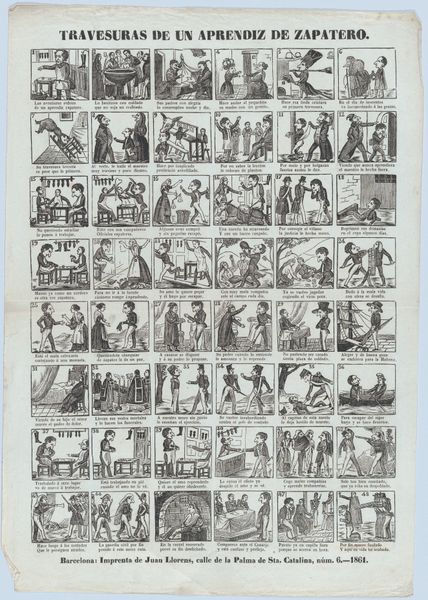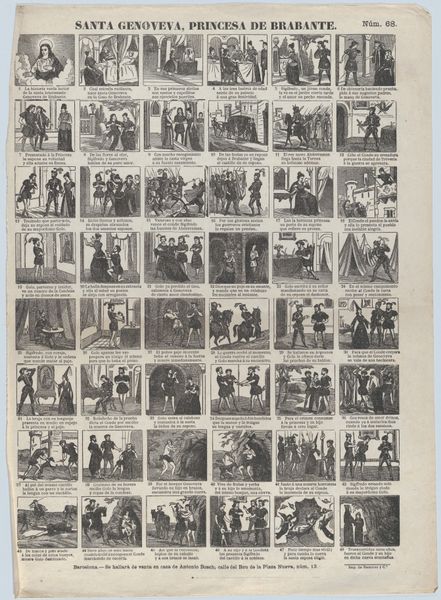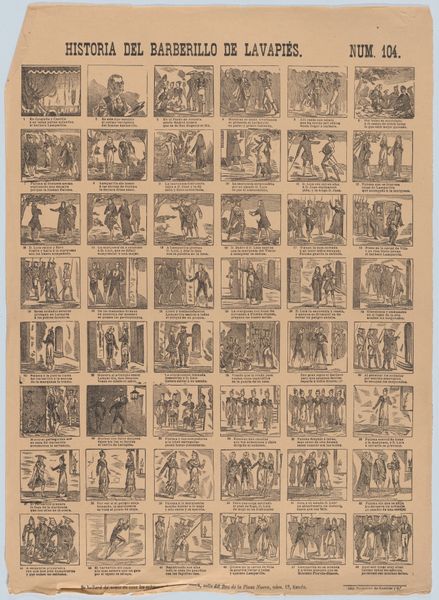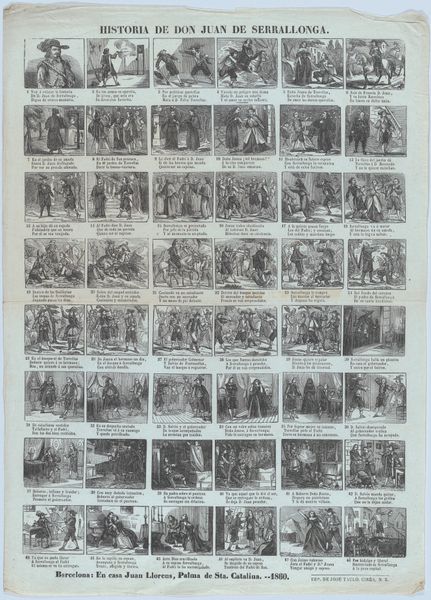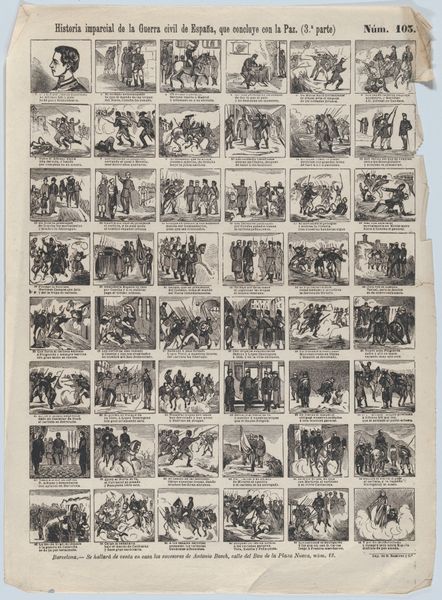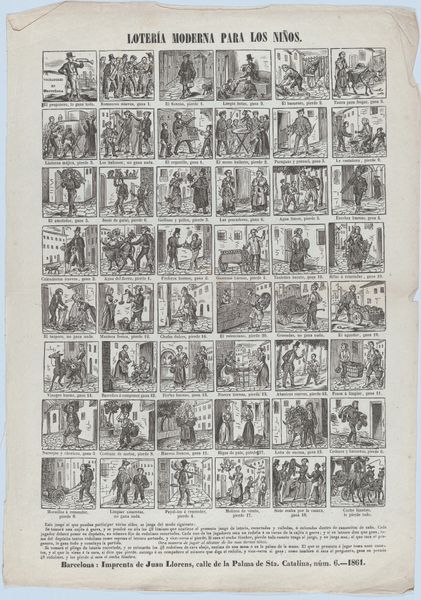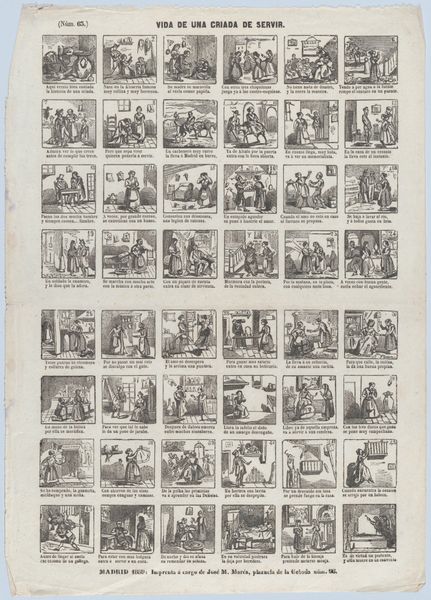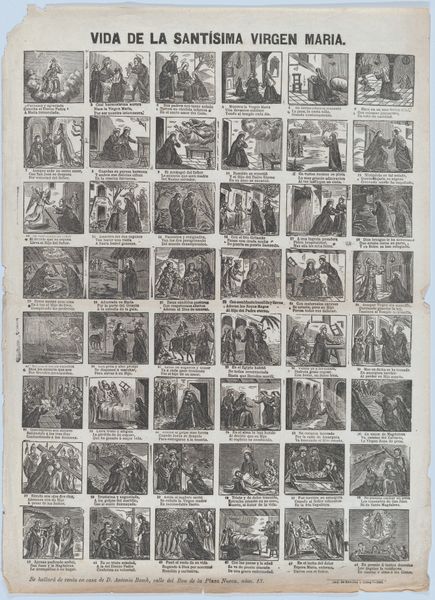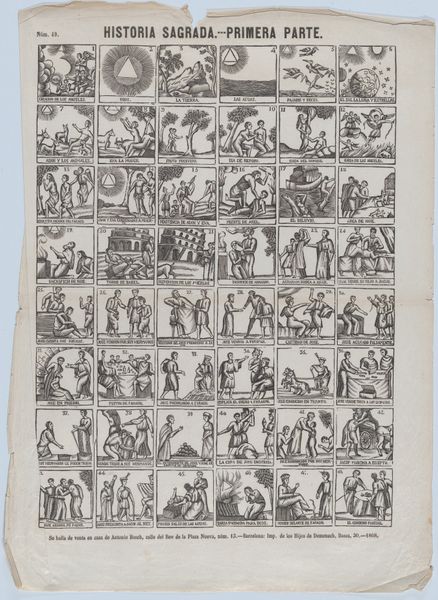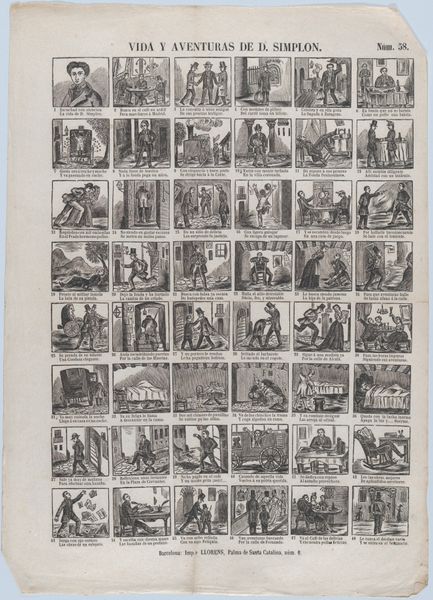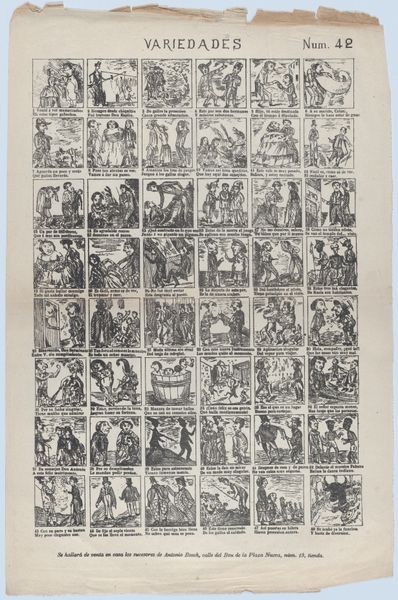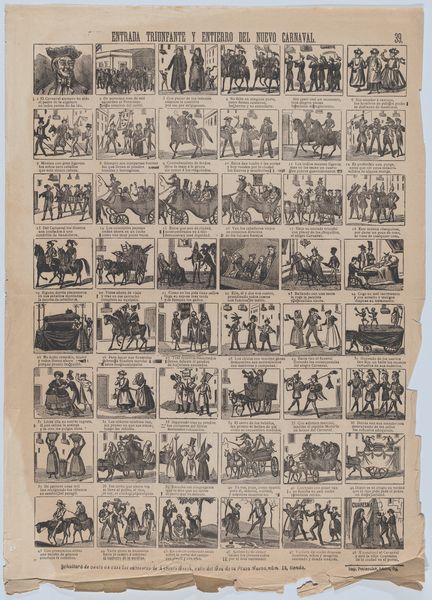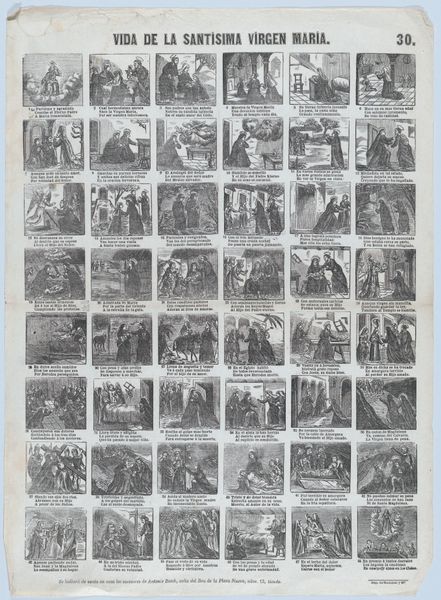
Broadside with 48 scenes depicting the celebrations and customs of Barcelona 1855 - 1865
0:00
0:00
drawing, graphic-art, print, engraving
#
drawing
#
graphic-art
#
narrative-art
#
animal
# print
#
child
#
horse
#
men
#
cityscape
#
genre-painting
#
engraving
Dimensions: sheet: 17 1/2 x 12 1/2 in. (44.5 x 31.8 cm)
Copyright: Public Domain
Curator: Well, let's dive into this fascinating broadside created by Juan Llorens sometime between 1855 and 1865. It's titled "Fiestas y Costumbres de Barcelona," and it resides here at The Met. Editor: Whew, what a teeming, tiny world! It looks like a beautifully chaotic storyboard for a city that knew how to live it up. So many squares, like individual windows into Barcelona’s soul. Curator: Exactly! It functions as a visual record, almost an archive, of mid-19th-century Barcelona. Broadsides like these served a vital role, disseminating information about local customs and celebrations to a wide audience. Before photography became commonplace, such prints offered a powerful, accessible means of circulating visual information. Editor: You can almost hear the music and feel the jostling crowds, even in these wee engraved glimpses. Is that a bullfight I see over there? And what's with the folks tossing what appears to be...babies?! Okay, maybe not. The style, to me, feels somewhere between caricature and affectionate documentary. What strikes me the most is the vibrancy. You feel Barcelona was alive! Curator: The baby-tossing scene likely depicts a religious ritual! These were common elements within Barcelona's festive life, and broadsides served as important documents about those traditions. And your reading is astute; the composition definitely evokes a lively, bustling city. Llorens doesn't just depict the events; he captures their cultural significance within Barcelona's identity. Editor: And did you notice all of the animals—mostly horses, but also oxen! To me, they contribute a very powerful, organic force within the overall scene. You can smell, touch, almost breathe in that sense of the moment through each image. Do we know what the average print run for these was? Were they rare? Curator: That's a very pertinent inquiry! It's difficult to establish definitive numbers on such runs with limited production details, but what's clear is their intent: to inform and potentially sell these prints among locals or visitors seeking reminders. The accessibility and abundance are key factors for interpreting such material objects inside Barcelona's societal picture during this time. It reminds me of mass produced prints used to stirr patriotic fervor throughout European society.. Editor: To me, this thing feels so intensely LOCAL. Imagine finding something similar but depicting scenes in your area? You'd feel connected! And, maybe it’s time for us to revive the practice and create some visual snapshots, our own personalized graphic art reflecting all OUR cultural festivals. Curator: That would be a project I would champion to support the public's continued understanding of where we came from. Ultimately, that connection to history and tradition underscores why this broadside remains important. It serves as an engaging look into Barcelona's narrative as captured and shared in time through cultural traditions, public dissemination, or communal experience.
Comments
No comments
Be the first to comment and join the conversation on the ultimate creative platform.
